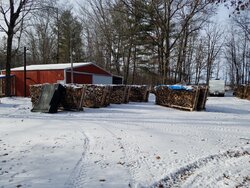So the next thing is the chimney, the chimney is the engine that drives the stove, a poor flue will always lead to poor results, the key to is remember minimum stove chimney heights, the average stove suggests a minimum chimney of 15ft and is usually 6" inside diameter, if going with a class A pipe choose the double wall insulated vs the triple wall, triple wall tends to cool flue gases to quickly and you end up with creosote issues (flue gases condensing below 250deg f) If you (which I see after re-reading) go with an insert into an existing masonry chimney you need to install an insulated liner, the insulated line does a few things, 1 - keeps flue gases warm, 2. if you existing liner is compromised such as cracks, poor mortar joints ect.. it will protect you if you were to have a chimney fire (chimney fires can exceed temps of 2,000 deg f) 3. most existing chimneys are not built to the proper clearance codes around combustibles such as framing / wood sheathing, house structure, an insulated liner reliefs that 2" air space or 8" solid masonry code.
Consider installing a block off plate above the insert inside the fireplace, add roxel insulation (fire proof) above the plate for addition performance, yes so installers say you don't need the block off plate because the top of the chimney is capped with a plate that supports / terminates the liner, to a point they are correct, but why about all the heat being absorbed into the masonry? the block off plate helps shield the radiant heat that is produced and sends the additional heat into the room, it also helps the insert stay warm and that will help it run more efficient, lower air sets for the same about of heat coming into the room.
Also consider adding some type of fresh air connection to the stove (oak - outside air connection) if your stove doesn't have one, you can add a small vent to the base of the stove (easy if the chimney is on the outside envelope of the house) this will reduce inside air being used for combustion, reducing drafts in older or less sealed homes, it is also a must if you have a tight air sealed place, if you don't have one then your stove will be competing with other appliances for air, this can cause reverse draft issues on starting, smoke roll out when the door is open for loading, and worst.. CO intrusion when the fire is down to coals at the end stage of the burn.





 love the yard setup.. wood mans dream
love the yard setup.. wood mans dream